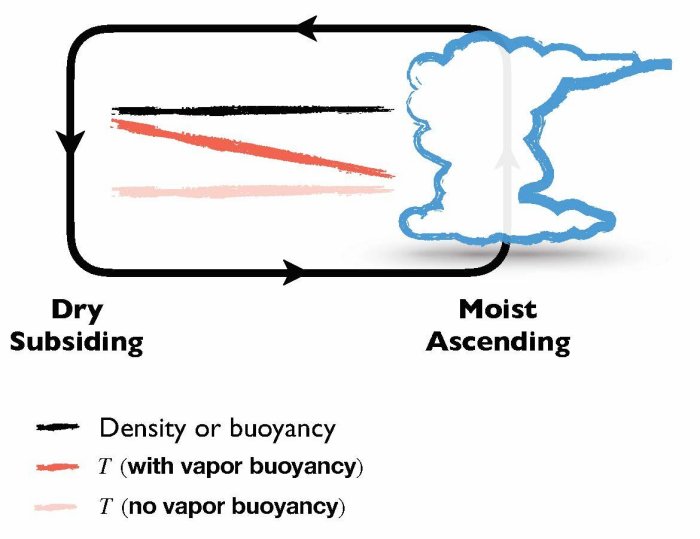Cold Air Rises – How Will This Change Our Future Climate?
Don Wood – MessageToEagle.com – Our climate is changing and that’s no news, but how will the rise of cold air change Earth’s climate and energy balance?
Conventional knowledge has it that warm air rises while cold air sinks. However, a recent study from the University of California, Davis, found that in the tropical atmosphere, cold air rises due to an overlooked effect—the lightness of water vapor. This effect helps to stabilize tropical climates and buffer some of the impacts of a warming climate.

Credit: Public Domain
The study, published in the journal Science Advances, is among the first to show the profound implications water vapor buoyancy has on Earth’s climate and energy balance.
“It’s well-known that water vapor is an important greenhouse gas that warms the planet,” said senior author Da Yang, an assistant professor of atmospheric sciences at UC Davis and a joint faculty scientist with Lawrence Berkeley National Laboratory.
See also:
Sahara Was The Most Dangerous Place In The History Of Planet Earth
Climate-Driven Megadrought Is Emerging In Western US – What Can We Expect?
Ancient Marine Fossils Shed New Light On Longstanding Climate Puzzle
“But on the other hand, water vapor has a buoyancy effect which helps release the heat of the atmosphere to space and reduce the degree of warming. Without this lightness of water vapor, the climate warming would be even worse.”
Humid air is lighter than dry air under the same temperature and pressure conditions. This is called the vapor buoyancy effect. This study discovered this effect allows cold, humid air to rise, forming clouds and thunderstorms in Earth’s tropics. Meanwhile, warm, dry air sinks in clear skies. Earth’s atmosphere then emits more energy to space than it otherwise would without vapor buoyancy.

This graphic illustrates the vapor buoyancy effect, in which cold, humid air rises because it is lighter than dry air. Credit: Da Yang/UC Davis
The study found that the lightness of water vapor increases Earth’s thermal emission by about 1-3 watts per square meter over the tropics. That value compares with the amount of energy captured by doubling carbon dioxide in the atmosphere. The authors’ calculations further suggest that the radiative effects of vapor buoyancy increase exponentially with climate warming.
A better understanding of the vapor buoyancy effect and its stabilizing role in the tropics can also improve cloud and thunderstorm simulations, as well as climate models, the study said.
“Now that we understand how the lightness of water regulates tropical climate, we plan to study whether global climate models accurately represent this effect,” said the study’s lead author, Seth Seidel, a graduate student researcher at UC Davis.
Written by Don Wood – MessageToEagle.com Staff










